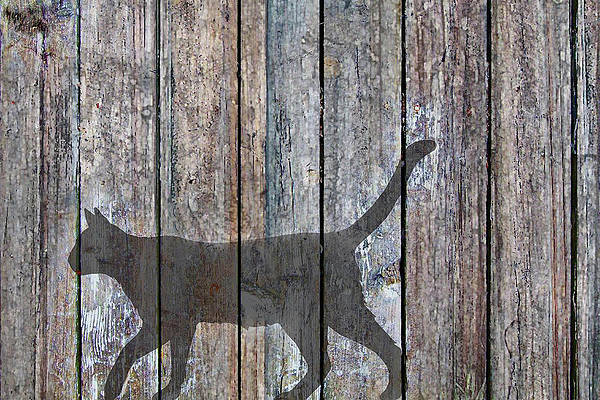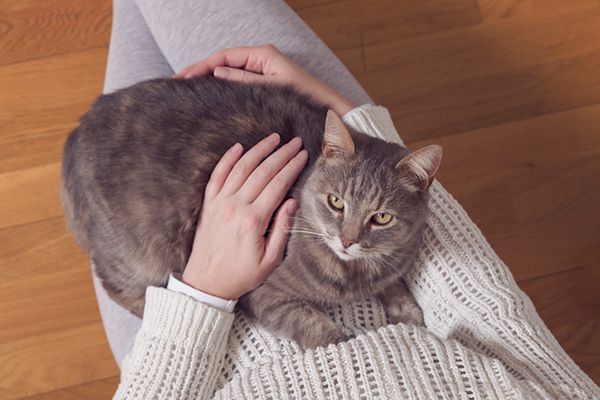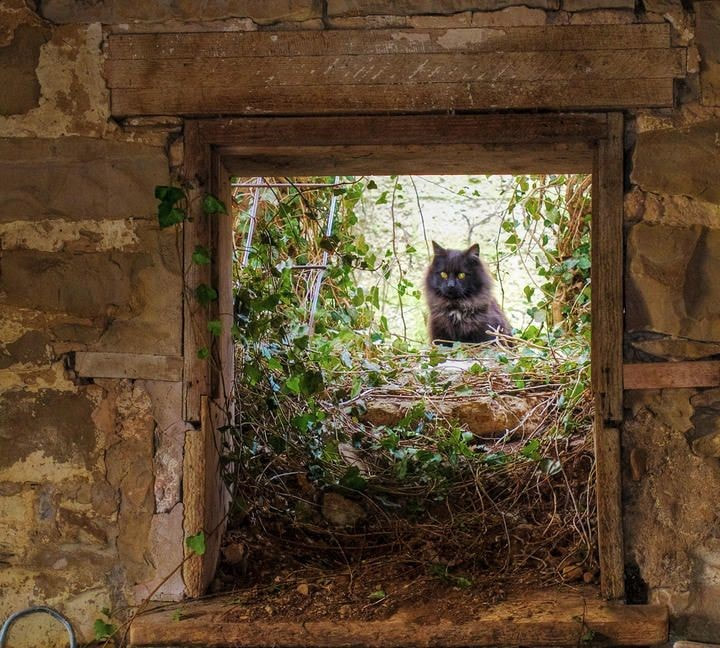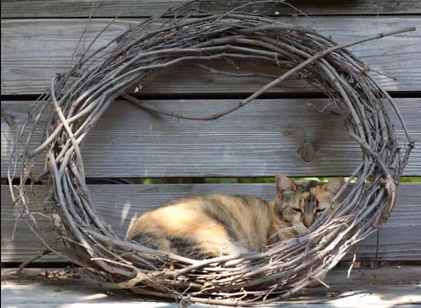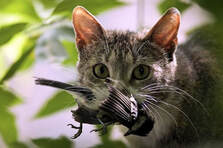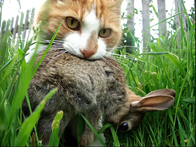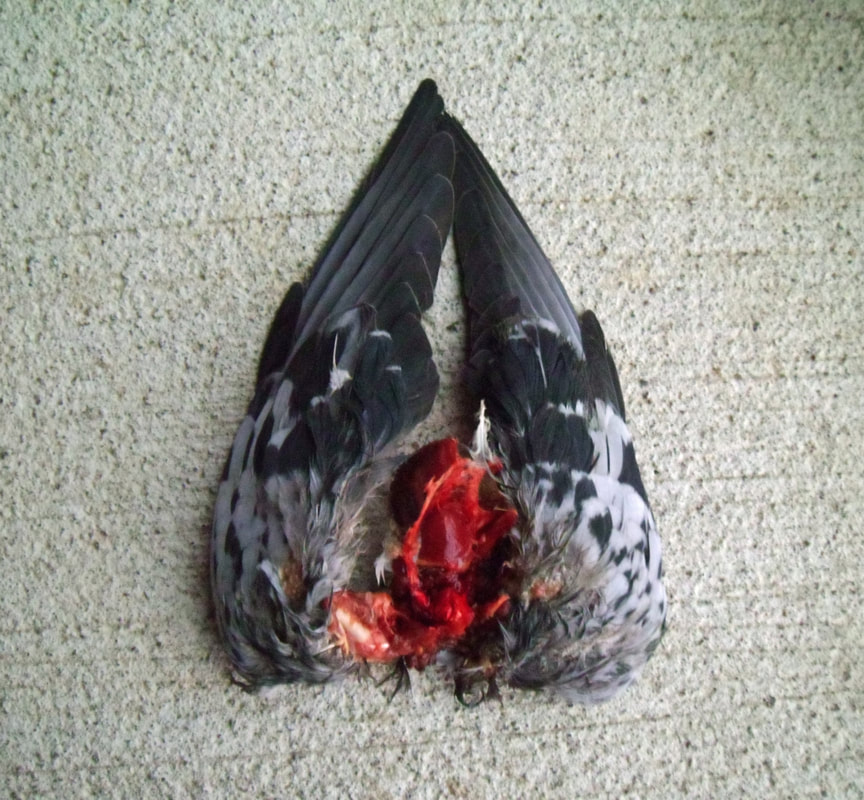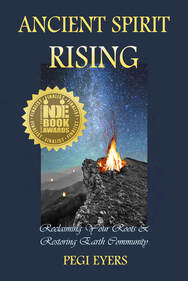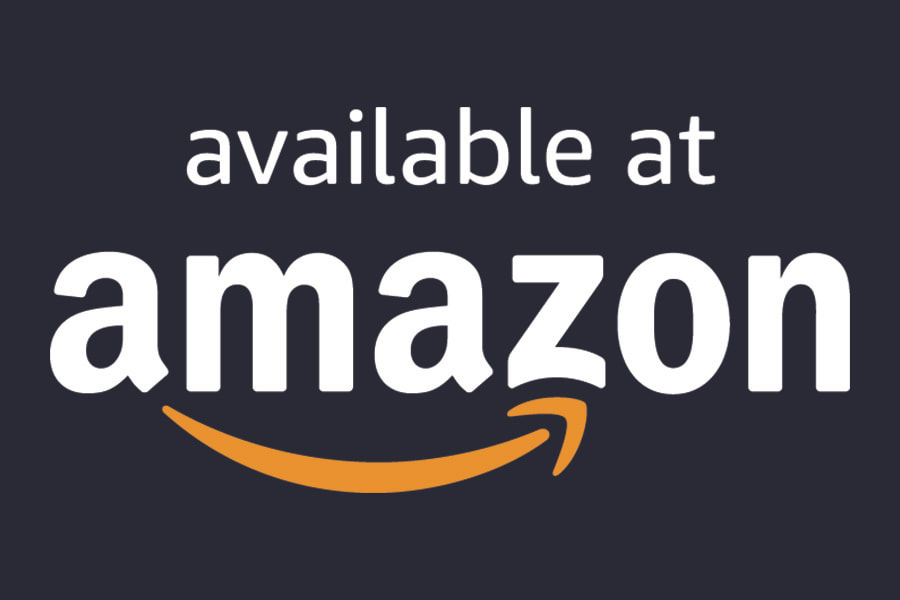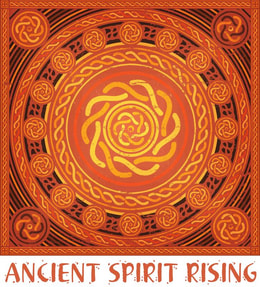PEGI EYERS
For millennia the false narratives of western civilization have placed humans as superior to all other life, and our era of late-stage capitalism has intensified our callous exploitation of “resources,” and our disconnect from the natural world. And yet we still carry the wisdom of our Ancestors deep within, the “Indigenous lore and undomesticated knowledge that portrays the world, and everything in it, as existing for its own sake, not to be defined, confined, known or possessed.”[1] At the other extreme, we have been cushioned from encounters with “the feral” and have been influenced by the lies in books and films that demonize wild animals, and present them as monsters to be eradicated and feared. We rarely experience truthful encounters with animals, or intentionally seek them out, and yet I have discovered that the boundary between “wild” and “tame” is a permeable state, and surprisingly, subject to what is most expansive, and positive, in the human heart and soul.
One beautiful summer day not too long ago, I was shocked by a horrifying sight – my beloved cat Fettie rolling around in a Wild Turkey nest, full body stretched out in ecstasy, with the chipped remains of 13 very large eggs all around him. I had been well aware of the nest for weeks, and with a protective gaze had been nervously watching the cows in the pasture browsing closer and closer to where Mama Turkey had chosen to build, right on the border of fenced pasture and wildflower meadow, leading up to the house on the hill.
And yet it wasn’t the thousand-pound cows crushing the delicate eggs that were a danger to the heart-melting prospect of motherhood and new babies, it was a member of my own family. So impossible did it seem that my lap-cat Fettie, so well-fed and spoiled, would end those precious wild lives, I actually spent two days thinking that he had come upon the nest already plundered, and was claiming some sort of ownership after-the-fact. And yet, the more I thought about it, the more I realized that body language does not lie. By rolling around in the remains of bone, feather and shell, the cozy nest of baby birds now gone from this world, he was showing me how pleased he was with himself – with his skill at killing, and his ability to survive, and thrive.
One beautiful summer day not too long ago, I was shocked by a horrifying sight – my beloved cat Fettie rolling around in a Wild Turkey nest, full body stretched out in ecstasy, with the chipped remains of 13 very large eggs all around him. I had been well aware of the nest for weeks, and with a protective gaze had been nervously watching the cows in the pasture browsing closer and closer to where Mama Turkey had chosen to build, right on the border of fenced pasture and wildflower meadow, leading up to the house on the hill.
And yet it wasn’t the thousand-pound cows crushing the delicate eggs that were a danger to the heart-melting prospect of motherhood and new babies, it was a member of my own family. So impossible did it seem that my lap-cat Fettie, so well-fed and spoiled, would end those precious wild lives, I actually spent two days thinking that he had come upon the nest already plundered, and was claiming some sort of ownership after-the-fact. And yet, the more I thought about it, the more I realized that body language does not lie. By rolling around in the remains of bone, feather and shell, the cozy nest of baby birds now gone from this world, he was showing me how pleased he was with himself – with his skill at killing, and his ability to survive, and thrive.
How must Mama Turkey be feeling, I wondered? Her heart broken, her purpose in life destroyed, her deep sorrow at the tiny sweet babies all gone, her beautiful family that never materialized a deep dark scar on her soul. And yet I was anthropomorphizing, projecting my human sensibilities on the non-human – we do it all time – but in my heart I knew that Mama Turkey did know and feel many of those things. Wild Turkeys are smart community-oriented birds with long memories, and since that terrible violation the flocks in the far-off fields have kept a safe distance, and no other nest has ever appeared.
Something in the human heart – mine in particular – will always mourn the departure of any infant taken from Earth Community, but I also know that the predator and prey relationship is integral to this world. As a semi-carnivore living a privileged life far from the killing and butchery process, evidence of the hunt - or demise by natural means - has been a familiar sight during my sojourns in the wild. Today, I define my deep bonds to the land as Animism, based on a life-altering ecomystic experience at age eight when I was immersed in the transcendent glow of nature for an entire afternoon, to decades of ambling in the woods, or dashing there for sanctuary and healing. Interactive communion with the other-than-human has been part of my life for a very long time, and the reciprocity emanating back to me from the wild beings, elements and creatures never ceases to amaze. And never more so, then when taking on the uncomfortable, tiring, frustrating, and ultimately rewarding role, of "Tamer of Feral Cats."
Something in the human heart – mine in particular – will always mourn the departure of any infant taken from Earth Community, but I also know that the predator and prey relationship is integral to this world. As a semi-carnivore living a privileged life far from the killing and butchery process, evidence of the hunt - or demise by natural means - has been a familiar sight during my sojourns in the wild. Today, I define my deep bonds to the land as Animism, based on a life-altering ecomystic experience at age eight when I was immersed in the transcendent glow of nature for an entire afternoon, to decades of ambling in the woods, or dashing there for sanctuary and healing. Interactive communion with the other-than-human has been part of my life for a very long time, and the reciprocity emanating back to me from the wild beings, elements and creatures never ceases to amaze. And never more so, then when taking on the uncomfortable, tiring, frustrating, and ultimately rewarding role, of "Tamer of Feral Cats."
Living in rolling countryside on the outskirts of a medium-sized Canadian city affords the best of both worlds – proximity to necessities and amenities, plus the “far removed” stance of being surrounded by nature, the deep quiet punctuated by birdsong, turbulent winds or coyote’s howl, and at the end of the day, a clear view of starlit skies reaching to the cosmos. Sighting wild species such as deer, fox, hare or hawk is a blessing, and a reminder of my own wildness, or “deep feral” within, and my own potential to thrive in the wild.
A few years ago three small raccoons ambled up the hill directly toward me, making eye contact and chirping a kind of welcome that was more like a plea for help. Much to my surprise, I got directly to work picking the many burrs and sticky seed pods out of their fur. They spent the summer in proximity to the farm, being fed cat kibble, letting me gingerly pet them (to a degree), jumping on me as I was reading on the porch, occasionally coming though the door, or communicating in that frolicking charming way of raccoons all over Turtle Island. But to tame them as pets? That was never an option.
And yet, what happens at the intersection of wild/domestic when there does appear a species, like a cat, that one can tame? A free-roaming and unowned cat is as feral as any other creature, spending most of the time stalking and hunting over wide distances, marking territory, and depending on the cat, hiding out during the vulnerable daylight hours. For me, the boundary between “wild” and “tame” is fascinating to the point of obsession, as I’ve spent literally weeks interacting, observing, and questioning these kinds of relations.
For one thing, how do domesticated felines end up in the wild? Born into the wild or abandoned, a cat who lives as a wild animal is at risk of death from predators such as coyotes, and diseases such as rabies, feline leukemia and parasites. Cursing as I do “all those who discard cats,” unfortunately our unpaved country road is a good location for city dwellers burdened with pet responsibilities – a “dumping ground” as it were for cats of all stripes, ages, and various states of well-being. Our farming neighbours are not especially welcoming to cats, except for occasional hand-outs to the ones residing in drafty barns, left to survive (or not) on their own. One warm summer’s eve, I spotted a cat with grey fur wandering erratically back and forth across the road, oblivious to danger. Instantly I knew this was a newly-abandoned cat, and stopped my car to help. He or she seemed delirious, wounded, suffering from the effects of a head injury perhaps, and the closer I got the further they ran away. “Definitely not about to trust a human, not now” was the clear message I received. By the time I went home for trapping equipment and returned, the cat was already dead at the side of the road, hit by some oblivious driver.
Even more upsetting were the bags of feline remains, and the skeletons under the trees, I found one day hiking in the woods near the road past the farm. These kinds of events are hardly significant to the farmers and hunters of my region, but devastating to cat lovers. And yet, in contrast to the heartbreak are the “love stories” of four feral cats, who successfully made their way to the farm on the hill - now safely ensconced on their mats, with names, personalities, love, family, care, full bellies and medical histories.
A few years ago three small raccoons ambled up the hill directly toward me, making eye contact and chirping a kind of welcome that was more like a plea for help. Much to my surprise, I got directly to work picking the many burrs and sticky seed pods out of their fur. They spent the summer in proximity to the farm, being fed cat kibble, letting me gingerly pet them (to a degree), jumping on me as I was reading on the porch, occasionally coming though the door, or communicating in that frolicking charming way of raccoons all over Turtle Island. But to tame them as pets? That was never an option.
And yet, what happens at the intersection of wild/domestic when there does appear a species, like a cat, that one can tame? A free-roaming and unowned cat is as feral as any other creature, spending most of the time stalking and hunting over wide distances, marking territory, and depending on the cat, hiding out during the vulnerable daylight hours. For me, the boundary between “wild” and “tame” is fascinating to the point of obsession, as I’ve spent literally weeks interacting, observing, and questioning these kinds of relations.
For one thing, how do domesticated felines end up in the wild? Born into the wild or abandoned, a cat who lives as a wild animal is at risk of death from predators such as coyotes, and diseases such as rabies, feline leukemia and parasites. Cursing as I do “all those who discard cats,” unfortunately our unpaved country road is a good location for city dwellers burdened with pet responsibilities – a “dumping ground” as it were for cats of all stripes, ages, and various states of well-being. Our farming neighbours are not especially welcoming to cats, except for occasional hand-outs to the ones residing in drafty barns, left to survive (or not) on their own. One warm summer’s eve, I spotted a cat with grey fur wandering erratically back and forth across the road, oblivious to danger. Instantly I knew this was a newly-abandoned cat, and stopped my car to help. He or she seemed delirious, wounded, suffering from the effects of a head injury perhaps, and the closer I got the further they ran away. “Definitely not about to trust a human, not now” was the clear message I received. By the time I went home for trapping equipment and returned, the cat was already dead at the side of the road, hit by some oblivious driver.
Even more upsetting were the bags of feline remains, and the skeletons under the trees, I found one day hiking in the woods near the road past the farm. These kinds of events are hardly significant to the farmers and hunters of my region, but devastating to cat lovers. And yet, in contrast to the heartbreak are the “love stories” of four feral cats, who successfully made their way to the farm on the hill - now safely ensconced on their mats, with names, personalities, love, family, care, full bellies and medical histories.
Speaking from experience, the taming of a feral cat can be a long and tedious process, taking up to two years from first introduction to full status as a “family member.” Even with monumental patience and constant urging, the feral is not entirely motivated until the food, warmth and shelter outweigh the doubts and fears. First the cat appears, perhaps sighted hanging around the barn, under the storage shed, or in Bin Bin’s case, roaming up and down the front lane to burrow under the leafy border of Maple Trees. Next - the calling and coaxing, the rattle of kibble in the dish, or food left out for their wanderings. Ferals are usually ravenous, and if food is available along with a friendly human presence, they are willing to take the risk. Even after many weeks (or months) of this sporadic feeding, there is still no eye contact, and they continue to run and hide.
Then, as the deep freeze of a Canadian winter sets in and the wind blows hard, the feral will finally cross an inconceivable boundary and enter the house, sometimes hiding in the basement for many weeks (or even months!) as they become accustomed to the smells and sounds of mechanical things like heaters, and human activity. Finally, after many hours of venturing into the lair with food and hesitant touch, trust is established and eye contact is made. Slowly the unremitting praise and petting has an impact, and after a few inevitable scratches and band-aids, the cat is tumbled into the carrier, taken to the veterinarian, and with the finality of surgery (spay or neuter) domestication is achieved.
Warmth, light, a steady food supply, and love are what domestication brings, and seemingly what the wild animal needs. But how can you “need” things that have been a complete unknown? Some mysterious reciprocity begins with the domestication process, changing the boundaries of what is wild and what is not. Animals have love, care and loyalty to each other it’s true, expressed in their own unique way, and yet what can human love mean to an animal? Probably nothing at first, but over time a strange and miraculous intersection occurs, that something of that love is now being expressed by the animal. Are they mirroring it back to us, or do they actually carry the seeds for deep love between species? Can this be some kind of miracle that confirms our value as a human, to awaken a rare and transformative interspecies affection? If so, and if we can extend that same love to all of Earth Community, at the very least can we take our place in the Sacred Circle, with the intent to heal and care for all beings?
Then, as the deep freeze of a Canadian winter sets in and the wind blows hard, the feral will finally cross an inconceivable boundary and enter the house, sometimes hiding in the basement for many weeks (or even months!) as they become accustomed to the smells and sounds of mechanical things like heaters, and human activity. Finally, after many hours of venturing into the lair with food and hesitant touch, trust is established and eye contact is made. Slowly the unremitting praise and petting has an impact, and after a few inevitable scratches and band-aids, the cat is tumbled into the carrier, taken to the veterinarian, and with the finality of surgery (spay or neuter) domestication is achieved.
Warmth, light, a steady food supply, and love are what domestication brings, and seemingly what the wild animal needs. But how can you “need” things that have been a complete unknown? Some mysterious reciprocity begins with the domestication process, changing the boundaries of what is wild and what is not. Animals have love, care and loyalty to each other it’s true, expressed in their own unique way, and yet what can human love mean to an animal? Probably nothing at first, but over time a strange and miraculous intersection occurs, that something of that love is now being expressed by the animal. Are they mirroring it back to us, or do they actually carry the seeds for deep love between species? Can this be some kind of miracle that confirms our value as a human, to awaken a rare and transformative interspecies affection? If so, and if we can extend that same love to all of Earth Community, at the very least can we take our place in the Sacred Circle, with the intent to heal and care for all beings?
There certainly is no discounting that the cats in my life, best friends who share movies and rides in the car, will continue to bring out my best qualities of love and care, and to teach me how to be true to myself, be patient, stick to a routine, spend lots of time meditating and looking at trees and clouds, and to pounce on something immediately if it appears delicious to eat. Most assuredly, cats have personality traits similar to human qualities – loyalty, respect, gratitude and altruism, such as the day when Buster guided another feral cat to the house, with behavior that can only be described as gallant. And the gift of purring to heal the human psyche cannot be understated-!
What is it in the animal that allows for domestication, to be content around humans, but maybe just as content in the natural world? The urge to hunt never leaves, as with his exceptional strength, speed, sharp claws and deep bite my boy Fettie will always be a highly-skilled predator. One autumn afternoon he bolted into the field of golden corn, and by the time he arrived at the road 300 feet away, had killed a hare exactly the same size as himself. Watching him drag the poor creature home in triumph was a tragedy for me, the over-domesticated human. My compulsion to painstakingly record the kills in photographs – the turkey eggs, the hare, the hawk, the voles, the mice, the baby rabbits, the various songbirds and woodpeckers – is to perhaps make sense of a process that few have the opportunity to witness, in our modern world.
For millennia humans were not domesticated, and our hunter-gatherer societies were highly successful. Civilization and our removal from the wild may offer certain advantages, but based on massive change and climate disaster today, has become lethal to Earth Community. Looking into the eyes of another species and sharing our lives means being connected, empathic, grounded, embodied, vibrant, present, spiraling in time, sensing the mystery, and feeling wonder or awe – all aspects of a much-needed return to Ancestral Wisdom. Without a doubt, we are companions on the journey. And with our ongoing sorrows and sacrifices, perhaps all beings – animal, human, plant, element or other – can share the deeply felt dynamic of both predator and prey, taking turns over and over in the great Dance of Life.
What is it in the animal that allows for domestication, to be content around humans, but maybe just as content in the natural world? The urge to hunt never leaves, as with his exceptional strength, speed, sharp claws and deep bite my boy Fettie will always be a highly-skilled predator. One autumn afternoon he bolted into the field of golden corn, and by the time he arrived at the road 300 feet away, had killed a hare exactly the same size as himself. Watching him drag the poor creature home in triumph was a tragedy for me, the over-domesticated human. My compulsion to painstakingly record the kills in photographs – the turkey eggs, the hare, the hawk, the voles, the mice, the baby rabbits, the various songbirds and woodpeckers – is to perhaps make sense of a process that few have the opportunity to witness, in our modern world.
For millennia humans were not domesticated, and our hunter-gatherer societies were highly successful. Civilization and our removal from the wild may offer certain advantages, but based on massive change and climate disaster today, has become lethal to Earth Community. Looking into the eyes of another species and sharing our lives means being connected, empathic, grounded, embodied, vibrant, present, spiraling in time, sensing the mystery, and feeling wonder or awe – all aspects of a much-needed return to Ancestral Wisdom. Without a doubt, we are companions on the journey. And with our ongoing sorrows and sacrifices, perhaps all beings – animal, human, plant, element or other – can share the deeply felt dynamic of both predator and prey, taking turns over and over in the great Dance of Life.
NOTES
[1] Layla Abdelrahim, Children’s Literature, Domestication, and Social Foundation: Narratives of Civilization and Wilderness, Routledge, 2015
Shifting Borderlands of Tame and Wild was originally published in Unpsychology Magazine, Issue #6, "The Other-than-Human Anthology," May 2020. Access a free free download of this journal here:
www.unpsychology.org/latest-issue/4585970771
[1] Layla Abdelrahim, Children’s Literature, Domestication, and Social Foundation: Narratives of Civilization and Wilderness, Routledge, 2015
Shifting Borderlands of Tame and Wild was originally published in Unpsychology Magazine, Issue #6, "The Other-than-Human Anthology," May 2020. Access a free free download of this journal here:
www.unpsychology.org/latest-issue/4585970771
| Pegi Eyers is the author of "Ancient Spirit Rising: Reclaiming Your Roots & Restoring Earth Community," an award-winning book that explores strategies for intercultural competency, healing our relationships with Turtle Island First Nations, uncolonization, recovering an ecocentric worldview, rewilding, creating a sustainable future and reclaiming peaceful co-existence in Earth Community. Available from Stone Circle Press or Amazon. |
